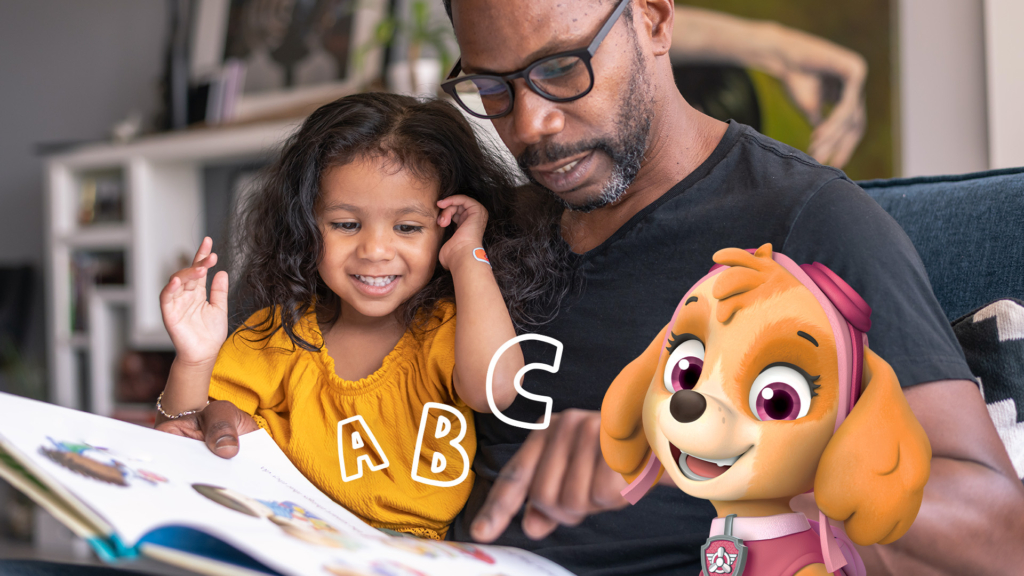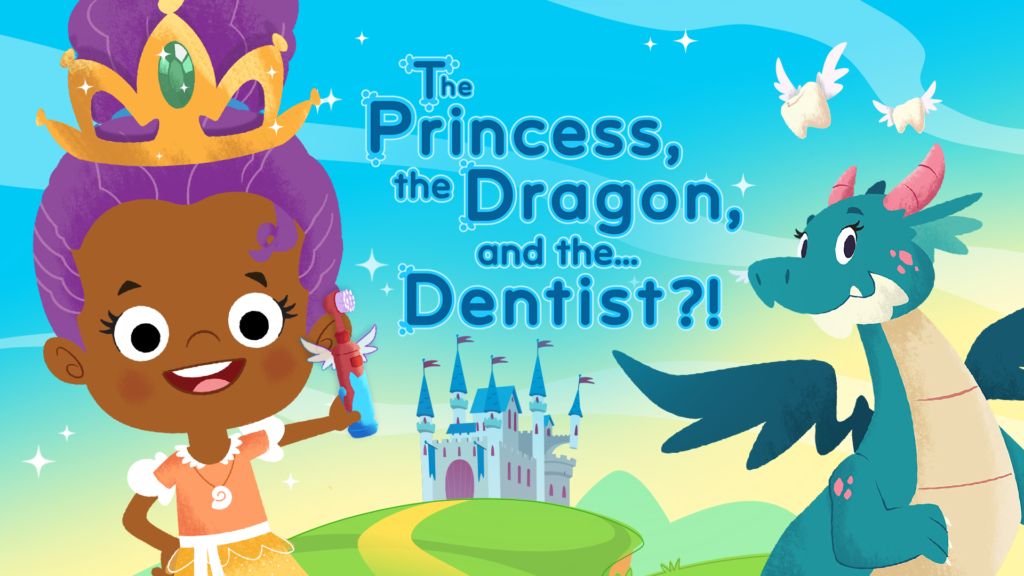- Early Reading
Dialogic Reading: Getting the Most out of Picture Books
Written by Israel Flores, Ph.D., Senior Manager of Learning & Impact at Noggin

You’ve just cozied up with your child for another session of story time and out comes their favorite book. While your instinct might be to reach for a new book, there are actually so many benefits to reading your child’s favorite story over and over again!
The trick to rereading a picture book is to make it interactive.
Children generally learn best through social interactions where they engage with a partner (you!). A trusted method for reading picture books, known as dialogic reading (Whitehurst et al., 1988), turns your child into an active participant in understanding the story rather than a passive listener. This method is well known for boosting oral language skills, such as vocabulary and comprehension, among early readers of various abilities and ages.
How does dialogic reading work?
Dialogic reading views each page of the story as an opportunity to engage your child in conversation. The key technique for doing so is described in the PEER sequence, which represents a short interaction between an adult and a child. Let’s take a page from Noggin’s original interactive book, The Princess the Dragon, and the…Dentist?!, as an example of how you might implement the PEER sequence. On one page, Princess Zooli is shown cleaning plaque from a dragon’s mouth!
Prompt the child to to say something about the story
- You might say, “What’s this?” as you point to a dragon tooth
Evaluate the child’s response, acknowledging what they said and giving feedback
- Your child might say “tooth,” which you evaluate: “That’s right! It’s a tooth!”
Expand on the child’s response by rephrasing it or adding to it
- You can expand by saying, “This one is a dragon tooth!”
Repeat the original prompt to see if the child picked up new information from the expand step
- You end with “So, what is this?” as you point to the dragon tooth
Don’t forget to praise your child at the end for a job well done.
Using Prompts
You’ll notice that the short interaction starts with a question. Here are 5 types of prompts which you can use:
Additional Tips
- Follow your child’s lead. Ask questions about words or details that your child is particularly interested in.
- A single interaction on a page is good enough. It can be fairly short or it can become a long conversation. Just go with it.
- Start with simpler Wh- and completion questions and work your way up to more complex open-ended, recall, and distancing prompts.
- Use prompts to expand on words your child might already know and build comprehension for ones they don't know yet.
- Finishing the book isn’t all that important. Getting caught up in talking with your child about the story is way more important than getting through it.
- You can read less of a story as you reread it more and more. Instead, ask your child more questions that get them to tell you the story.
- Come up with new questions during each reading. There are so many unique words, fun details, and interesting elements in picture books that you can ask about.
Read The Princess, the Dragon, and the...Dentist?! in Noggin!
Citations
See What Kids Learn with Noggin

Discover Your Child's Favorites

Give Noggin a Try
Kid-safe & ad-free
Accessible on multiple devices
New content added weekly
Downloadable books & games for offline play
Kid-safe & ad-free
New content added weekly
Accessible on multiple devices
Downloadable books & games for offline play



